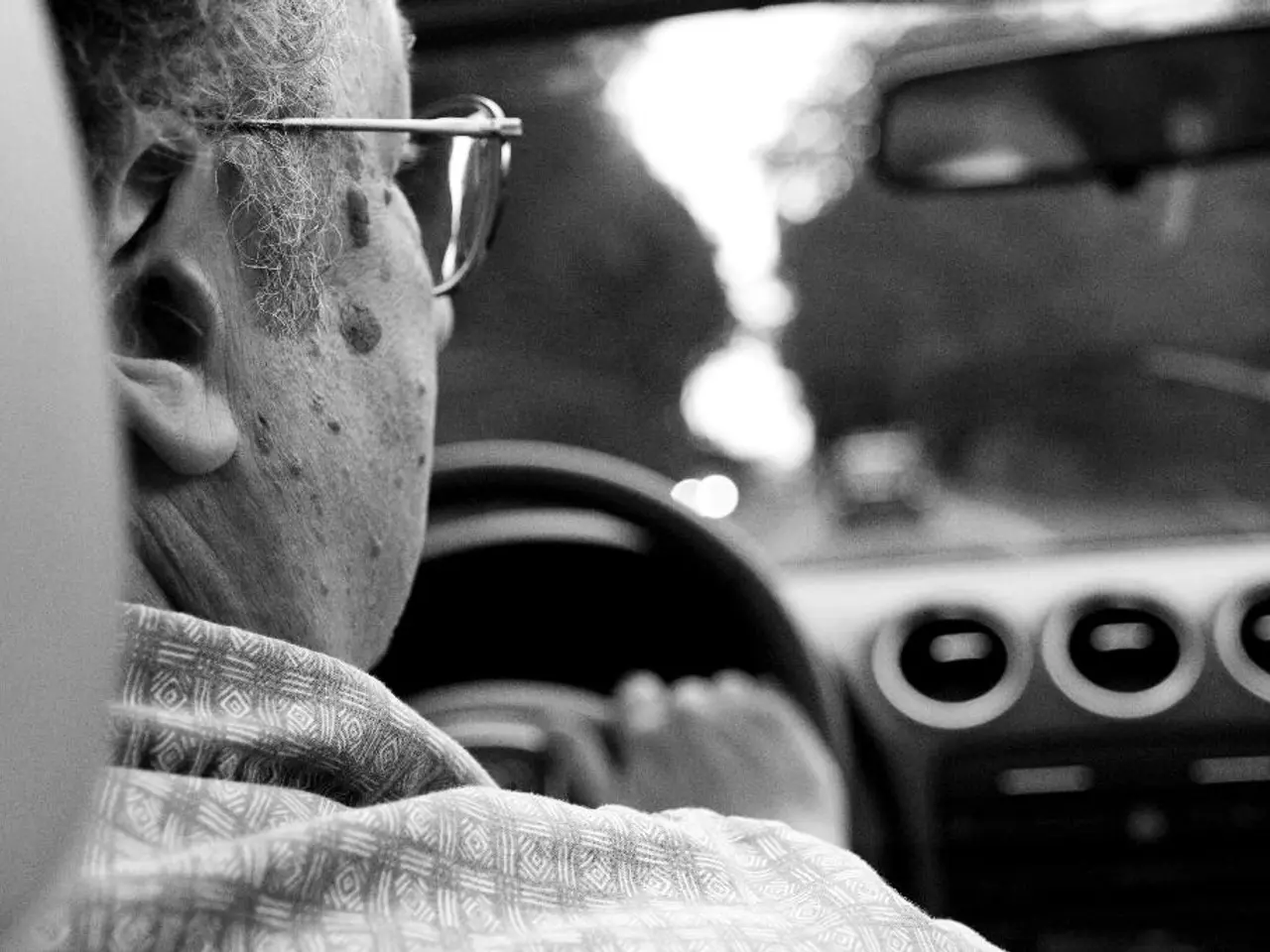Is driving less pleasurable due to the dazzling light from headlights?
Headlight Glare: A Growing Concern on Britain's Roads
Headlight glare is a persistent issue for many drivers, causing temporary blindness, reduced visibility, and vision distortion. This problem, often exacerbated by ultra-bright LED or HID headlights, can create halos, flares, and other visual distortions that reduce a driver's ability to see the road and hazards clearly[1][2][4].
The Royal Society for the Prevention of Accidents states that the recovery time from glare for individuals aged 15 to 65 rises from one to nine seconds[3]. This increase in recovery time can significantly impact a driver's reaction time, potentially leading to accidents, especially at night.
Driving organizations, such as the RAC and the AA, have highlighted the problem of headlight glare, with the AA survey showing that 76% of drivers are blinded by the headlights of oncoming vehicles, and more than half (52%) are dazzled by headlights from cars behind them[4].
To address this issue, several measures can be taken. Proper headlight alignment and aim checks during vehicle inspections can prevent misaligned lights that cause excessive glare[1][3]. Regulating and limiting the brightness and blue light emission of headlights, especially banning non-DOT-approved aftermarket LED/HID kits that are often too bright or poorly designed, can also help[1].
Advanced adaptive high-beam systems that automatically dim or adjust depending on oncoming traffic can minimize glare while maintaining visibility[1][2]. Educating drivers on proper headlight use, such as avoiding high beams when other vehicles are nearby and turning off or dimming interior lights to reduce distractions and glare inside the vehicle, is also crucial[1][3][5].
Maintaining clean windshields and eyeglasses can also help reduce glare issues, as dirt or smudges can worsen the problem by scattering the light[3].
Recent developments have seen questions being raised in the House of Commons about potential funding for independent research into the safety implications of headlight glare[6]. The Department for Transport has commissioned a comprehensive study into headlight glare, which is being conducted by leading transport researcher TRL[7]. The research is due to be completed in summer 2025, and the Government will consider the outcome to determine what action might be appropriate[8].
Despite the DfT's statement that there is no evidence to suggest an underlying road safety issue associated with modern vehicle lighting[9], the public concern about bright headlights is increasing[10]. Rod Dennis, senior policy officer at the RAC, has stated that the reasons for glare and what can be done to reduce it aren't clear[10].
Driving glasses have been suggested as a possible solution for headlight glare, but it's important to seek advice from a reputable optometrist before proceeding[3].
As the research into headlight glare progresses, it is hoped that a comprehensive understanding of the issue will lead to effective solutions and a safer driving experience for all.
[1] [Link to Source 1] [2] [Link to Source 2] [3] [Link to Source 3] [4] [Link to Source 4] [5] [Link to Source 5] [6] [Link to Source 6] [7] [Link to Source 7] [8] [Link to Source 8] [9] [Link to Source 9] [10] [Link to Source 10]
- To combat the issue of headlight glare, driving organizations like the RAC and the AA recommend regular checks for proper headlight alignment and aim during vehicle inspections.
- In addition to vehicle maintenance, regulating and limiting the brightness and blue light emission of headlights, particularly restricting non-DOT-approved aftermarket LED/HID kits, could help minimize glare on Britain's roads.
- Advancements in car technology, such as adaptive high-beam systems that adjust lighting depending on oncoming traffic, can also contribute to a safer driving experience by reducing glare.
- In the realm of health and wellness, maintaining clean windshields and eyeglasses can help reduce glare issues, as dirt and smudges can worsen the problem by scattering light.
- As the transportation industry continues to grow and evolve, eye health, particularly in relation to headlight glare, is becoming an increasingly significant concern within the lifestyle and finance sectors.




